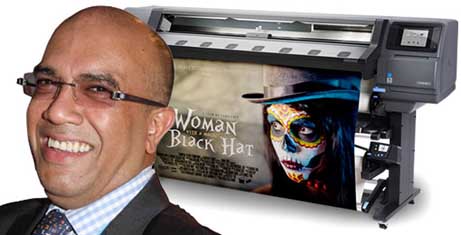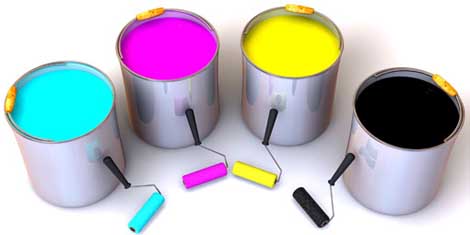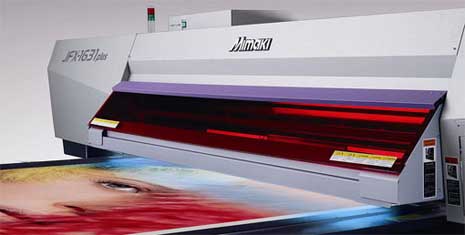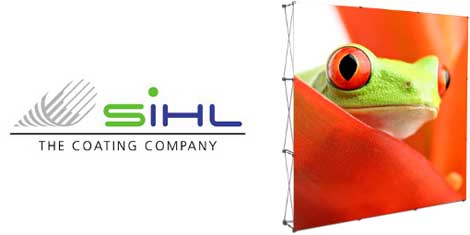
This printer? That printer? At times it seems that there is so little to choose between models these days. The choice is now increasingly about you and your preferences - not the product. Large Format Review's Marc Burnett is convinced that exceptional customer service is the way to win new customers and retain existing ones. He says…
So you’re a reseller of wide format printing solutions, and you want to win more business. You want to win that business without having to slash your prices to the point where the business is not worth having, or perhaps even worse, so that the profit you make will not adequately cover the costs of the ongoing support that your customer will rightfully expect.
The difficulty is, regardless of what products you represent, pretty much all wide format printers now work reliably and effectively. Certainly within their particular niche – typically defined by the type of ink used – they are all fairly comparable in terms of performance and their ability to get the job done.
Whereas once upon a time you could sell on the basis of some technical advantage or some incomparable benefit unique to your product, today a customer can increasingly make his or her wide format printer purchasing decision with the flip of a coin. The chances are that the printer will deliver on the most relevant daily production needs.
So, in this maturing market where technical differences are now minimal, where reliability is a given, and where the choices of product and supplier are numerous, the decision regarding which printer to buy and from whom is no longer about specifications, it’s about people buying people.
What was once a technical race to the finish line, is now a people business – the customer will buy you, your business and your philosophy. It’s all about trust. Customer support is not a cross you have to bear; it is an opportunity to ensure your customers remain your customers forever.
Provision of quality customer support is an opportunity for you to build a long term relationship with your customer. It’s also an opportunity for you to build and cement a reputation. And your reputation is everything.
Some years ago I worked at a company that was generally accepted as the leading independent UK supplier of innovative wide format printing solutions. The business was built on being first to market with the very latest emerging technologies. We sold the UK’s first Encad Novajet, the first electrostatic, the first UV flatbed printer. In a nutshell, we sold innovation and we sold opportunity.
The trouble was, such innovative equipment usually came with teething problems attached – and ironing out these bugs, which typically involved site visits, was only ever seen as an unwanted overhead. It was a cost that had to be carefully managed and minimised. In short, customer support was seen as a necessary, but perhaps rather unwelcome, evil.
Naturally this led to an uneasy relationship with some customers – particularly those customers who were early adopters and expected, rightfully so, to have their hands held through any initial troubles. Ultimately, this innovative supplier of ground-breaking technology suffered from poor customer retention levels and today the company is no longer trading.
Which leads to the question: how do you avoid the above, and ensure that your customer service levels are going to generate happy, loyal and long-term customers?
Ethics, ethics and ethics…
Warren Buffet, the oracle of value-based leadership, once had this to say: “I want employees to ask themselves whether they are willing to have any contemplated act appear on the front page of their local paper the next day, to be read by their spouses, children and friends… If they follow this test they will not fear my other message to them: lose money for my firm and I will be understanding; lose a shred of reputation for the firm and I will be ruthless.”
There are two vital things you need to take from the quote above: the ethics of your business have to come from the very top, and every single person in your business – from boardroom to warehouse – has to buy into it.
Only with that level of top-to-bottom all-in investment in nurturing and protecting your reputation can you hope to turn your business into a truly ethical and customer-focused operation. And if you do, it will win you new customers. Just as importantly, it will help you to retain your existing customers.
In this day and age, everyone and everything is under review; the supply chain is being scrutinised constantly. When buying like for like and closely-comparable products from vendors such as Amazon, customers are making their buying decisions based purely on ratings, reviews and reputation. Ignore that trend at your peril, pay lip service to it and you’ll get found out as a charlatan, invest in it and you will reap the rewards.
For far too long the wide format print industry has been built on a premise of over-promising and under-delivering. Change that, and you’ll stand out from the crowd.
But – and this is the real crux of the matter – you have to change it completely. Don’t just pay lip service to it; don’t simply pretend to be ‘customer-focused’; and certainly don’t lie about it.
If every single member of your staff applies the Buffet rules above, they’ll perform better, they’ll produce more, and just as importantly, they’ll be happier for it.
Inside the workplace, and further afield, treat people with respect, do what is right, always seek to improve, and accept personal responsibility for your own actions.
The proof is in the pudding. In 2014, 3M was recognised as the World's Most Ethical Company by Ethisphere, a USA-based independent centre of research, best practices and thought leadership that promotes best practices in corporate ethics and compliance. Interestingly, the average length of service for a UK-based 3M employee is 15 years. Quite simply, ethical practices - both business and personal - foster a sense of contentment.
Whether consciously or subconsciously, people actually want to do the right thing, they want to make customers happy, and they want to be empowered to do that. So give them that power, because ultimately quality customer service in a maturing market where products all perform to similar levels is the fundamental reason why customers will buy from you, and will continue to do so for years to come.









